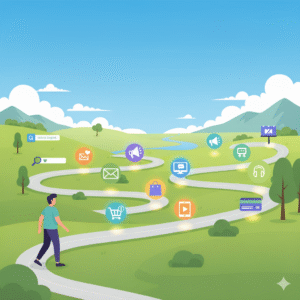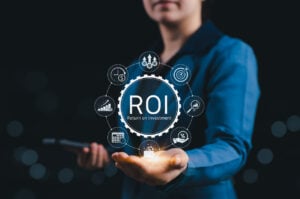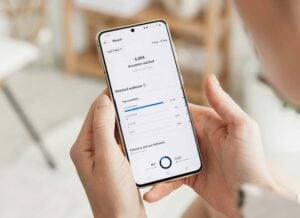The New Marketing Reality
Gone are the days when marketers could rely on one channel to drive business growth. We used to have cleaner tracking and attribution data. Now, in the age of data privacy, the water is murkier than it used to be.
The reality? We cannot focus on one channel, one tactic, one service. The age of Search Engine Optimization is dead. As Neil Patel says, SEO now stands for “Search Everywhere Optimization.” Social media platforms, search engines, and LLMs are all being used by consumers for search.
What does this mean for your organization? Be present—not on one channel, not just the one that has historically worked. Show up everywhere.
The Touchpoint Reality
Since ChatGPT launched on November 30th, 2022, marketing has been evolving rapidly. Back in 2021, brands needed to interact with consumers an average of 8.5 times before they made a purchase, according to Neil Patel. For context, brands had long known it took around 7 interactions for a consumer to recognize their brand, so 8.5 interactions didn’t sound unreasonable.
Where are we today? That number has risen to 11.1 touchpoints. “If you’re only active on one or two channels, you’re missing buyers,” Patel notes.
Here’s what’s critical: increasing the frequency on a single channel does not yield the same results as being present across multiple channels. Consumers have more access to information than ever before, and with AI-assisted research, the brands that are most trusted, qualified, and present across multiple channels are being recommended to users.
Why Single-Channel Strategies Don’t Work Anymore
Consumers look to multiple channels when researching a product or brand. For example, when shopping for luggage, I visited each brand’s website, asked Claude and Perplexity about them, checked their Instagram, and asked friends and family for recommendations. Consumers need to find you and interact with you across multiple channels to trust you.
Since increasing frequency on a single channel doesn’t match the value of multiple touchpoints, brands need to explore channels they’ve never tried, haven’t worked before, or have dismissed as irrelevant to their audience.
The Revenue Channel Reality
To develop a marketing strategy focused on increasing revenue, you need to know which channels typically drive the highest returns. The shiny object—social media—is not consistently one of them.
Paid Ads
Paid ads make it easy to draw direct ROI from marketing efforts. They’re also one of the most expensive channels for one simple reason: done right, they’re extremely effective.
If your paid ads are ineffective, many marketers will tell you to increase your spend. More money should equal more results, right? Wrong.
The purpose of paid ads is to get your target audience onto your website. Once they arrive, if your landing page isn’t optimized effectively, they won’t convert into leads. For paid ads to work, the entire user experience—content, landing pages, and funnel—must be optimized.
Email Marketing
Let’s be clear: bulk sales emails don’t work and no one likes them. That’s not what I’m talking about.
For e-commerce brands, automated email flows are proven to increase revenue. Platforms like Shopify (with native flows), Klaviyo, and Omnisend make this straightforward.
For B2B brands, email marketing is less straightforward. Quality beats quantity. Focus on personalizing your emails to each recipient. Give each email the time, effort, and attention it deserves. The more personalized, the better it performs.
Email marketing delivers one of the strongest returns among all digital channels. On average, each dollar invested generates about $36 in revenue, according to NP Digital.
SEO (Search Everywhere Optimization)
When I say SEO, I’m no longer referring only to Search Engine Optimization. I mean Search Everywhere Optimization.
The rise of AI has changed how brands should optimize their online presence. We used to focus on optimizing for keywords. Now it’s all about the entity.
Attribution for SEO efforts is becoming increasingly difficult to track, though not impossible. While SEO now extends beyond your website, the best way to be recommended by other sources is to continue following traditional SEO best practices. Blog posts still drive the most SEO traffic at 29%, according to NP Digital. Even as search has migrated to every channel, creating new, valuable content for your website remains critical.
The Value of The Funnel
How do you orchestrate 11.1 interactions with your consumers to earn a purchase?
For marketing professionals: Identify your gaps. Where are you not currently generating interactions? What channels do you need to activate? Start there.
For non-marketing professionals: Partner with a marketing strategist who can diagnose your specific challenges, understand your goals, and create a strategic solution using the Marketing Funnel framework.
The Marketing Funnel has three stages:
- Awareness – Top of Funnel
- Research – Middle of Funnel
- Selection – Bottom of Funnel
Each stage is unique, important, and requires varying levels of activity to generate your 11.1 consumer interactions. Not every stage requires the same level of activity, but being active in every stage of the funnel is essential.
Where To Start
Keep it simple. Don’t dive into the deep end without testing the water first.
Start by outlining the channels you’re currently active on. Identify whether you need to optimize your presence there. If you’re not paying close attention to a channel, the answer is yes—you need to optimize.
Once you’ve improved your current channels, turn your attention to new ones.
The important principle: Quality over quantity.
Conclusion
The marketing world is evolving, and this wave won’t stop for anyone. My recommendation is to focus on increasing your touchpoints with consumers as much as possible—but be strategic about it.
If you currently get 5 touch points, focus on reaching 6 before jumping to 11.1. Try something new. Increase your presence. But remember: quality is always greater than quantity.
The brands that win will be those present across multiple channels, delivering consistent value at every touchpoint.






